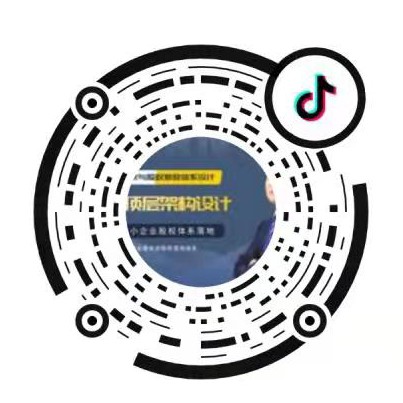
新闻资讯NEWS AND INFORMATION
山东老板必看:股权设计五大雷区,踩中一个就可能让企业“翻车”!
发布时间:2025-05-22 来源:http://www.lushangyun.com/
在山东这片创业热土上,每天都有无数企业诞生,但真正能笑到最后的,往往是那些懂得“分蛋糕”艺术的企业家。股权设计不是简单的数字游戏,而是关乎企业生死存亡的战略布局。今天,我们就来聊聊山东企业股权设计中最常见的五大误区,以及如何用“三板斧”破局。
In Shandong, a hotbed of entrepreneurship, countless companies are born every day, but it is often those entrepreneurs who know the art of "dividing the cake" who can truly laugh until the end. Equity design is not a simple numbers game, but a strategic layout that concerns the survival of the enterprise. Today, let's talk about the five most common misconceptions in equity design of Shandong enterprises, and how to use the "three board axe" to break through the situation.
误区一:股权均分,看似公平实则埋雷
Misconception 1: Equal distribution of equity, seemingly fair but actually sowing a thunderbolt
很多山东老板创业初期喜欢讲义气,兄弟几个五五分账,看似公平,实则暗藏危机。比如,两个创始人各占50%股权,一旦遇到分歧,公司决策直接陷入僵局。更可怕的是,这种“平分”思维会延续到后续融资、人才引进等环节,导致企业股权结构像一盘散沙,经不起风吹草动。
Many Shandong entrepreneurs like to show loyalty in the early stages of their business, dividing the accounts equally among their brothers, which may seem fair, but in reality, there is a hidden crisis. For example, if two founders each hold 50% of the shares, and there is a disagreement, the company's decision-making will be directly deadlocked. What's even more frightening is that this "equal distribution" mentality will continue into subsequent financing, talent introduction, and other links, resulting in the equity structure of the enterprise being like a scattered sand, unable to withstand any changes.
解决方案:
Solution:
“动态股权”打破僵局。山东某生物医药企业给出了教科书级示范:他们根据股东贡献度(资金、技术、资源等)每年调整股权比例,核心高管通过“业绩对赌+超额利润分享”获得股权增量。这种设计让团队凝聚力提升3倍,企业估值三年增长10倍。
Dynamic equity breaks the deadlock. A biopharmaceutical company in Shandong has provided a textbook level demonstration: they adjust their equity ratio annually based on shareholder contributions (funds, technology, resources, etc.), and core executives gain equity increments through "performance betting+excess profit sharing". This design increases team cohesion by three times and increases enterprise valuation by ten times in three years.
误区二:一股独大,老板成了“孤家寡人”
Misconception 2: One dominant force makes the boss a 'lone wolf'
有些山东老板信奉“我的地盘我做主”,自己持股超过90%,结果发现团队积极性低迷,优秀人才留不住。因为员工觉得“反正公司是老板的,干好干坏都一样”。更危险的是,一旦老板决策失误,企业可能瞬间崩塌。
Some Shandong bosses believe in "I make my own decisions on my territory" and own more than 90% of the shares, only to find that the team's enthusiasm is low and excellent talents cannot be retained. Because employees feel that 'since the company is owned by the boss, it's the same whether they do it well or badly'. Even more dangerous is that once the boss makes a wrong decision, the company may collapse instantly.
解决方案:
Solution:
“合伙人制度”激活团队。参考某智能制造企业的做法:将战略决策权授予7人合伙人委员会,同时设立审计、薪酬、战略三个专业委员会。这种设计既保持决策效率,又实现专业制衡,企业战略执行偏差率下降60%。
The 'partnership system' activates the team. Referring to the practice of a certain intelligent manufacturing enterprise: delegate strategic decision-making power to a 7-member partner committee, and establish three professional committees for audit, compensation, and strategy. This design not only maintains decision-making efficiency but also achieves professional checks and balances, reducing the deviation rate of enterprise strategic execution by 60%.
误区三:资源换股,最后发现“请神容易送神难”
Misconception 3: Resource Swap, Finally Discovering "It's Easy to Ask God, It's Hard to Send God"
山东企业重情义,创业初期常因资金紧张,用高比例股权换取资源支持。但资源方往往只贡献一次价值,后期却成了“甩不掉的包袱”。比如,某企业给资源方30%股权,结果对方不参与管理,资源还容易替代,企业后期发展严重受限。
Shandong enterprises value loyalty and often use a high proportion of equity to exchange for resource support in the early stages of entrepreneurship due to financial constraints. But resource providers often only contribute value once, and later become an 'inescapable burden'. For example, if a company gives 30% equity to a resource provider, but the other party does not participate in management, the resources are easily replaced, and the company's later development is severely limited.
解决方案:
Solution:
“阶梯式资源换股”。可以学习某跨境电商企业的设计:根据资源方贡献度(如订单量、客户数)动态调整股权比例,并设置“对赌条款”——未达目标则股权回购。这种设计既绑定资源,又避免股权过度稀释。
Step by step resource swap. You can learn from the design of a cross-border e-commerce enterprise: dynamically adjust the equity ratio based on the contribution of resource providers (such as order volume and customer numbers), and set a "bet clause" - if the target is not met, the equity will be repurchased. This design not only binds resources but also avoids excessive dilution of equity.
误区四:忽视退出机制,股权变成“定时炸弹”
Misconception 4: Neglecting the exit mechanism and turning equity into a "time bomb"
很多山东企业没有设计股权退出条款,结果小股东“躺平”甚至“捣乱”,大股东却束手无策。比如,某企业小股东因个人原因退出,但拒绝转让股权,导致企业融资受阻。
Many Shandong enterprises have not designed equity exit clauses, resulting in small shareholders lying flat or even causing trouble, while major shareholders are helpless. For example, a small shareholder of a certain enterprise withdrew due to personal reasons but refused to transfer their equity, resulting in obstacles to the company's financing.
解决方案:
Solution:
“阶梯式退出条款”。参考某人工智能企业的设计:股东退出时,股权回购价格与公司业绩、行业指数、服务年限挂钩。完成对赌后,原团队股权可转换为集团股权。这种设计使并购整合成功率提升至90%。
Step by step exit clause. Referring to the design of an artificial intelligence enterprise: when shareholders exit, the share repurchase price is linked to the company's performance, industry index, and service life. After completing the bet, the original team equity can be converted into group equity. This design increases the success rate of mergers and acquisitions integration to 90%.

误区五:股权与贡献脱节,团队变成“大锅饭”
Misconception 5: The disconnect between equity and contribution turns the team into a 'big pot of rice'
有些企业股权分配“拍脑袋”,导致贡献大的员工寒心,混日子的人占便宜。比如,某企业技术骨干持股5%,而财务投资人却占20%,结果核心团队集体出走。
Some companies' equity distribution "smashes their heads", causing employees with high contributions to feel disheartened and those who just slack off to take advantage. For example, a company's technical backbone holds 5% of the shares, while financial investors hold 20%, resulting in the core team collectively leaving.
解决方案:
Solution:
“三维评估模型”。山东某消费电子企业采用“战略重要性+资本投入+业绩贡献”三维模型分配股权。核心高管通过“超额利润激励”获得股权增量,普通员工则通过“虚拟股权”享受分红。这种设计使团队效率提升50%。
Three dimensional evaluation model. A consumer electronics company in Shandong adopts a three-dimensional model of "strategic importance+capital investment+performance contribution" to allocate equity. Core executives receive equity increments through "excess profit incentives," while ordinary employees enjoy dividends through "virtual equity. This design increases team efficiency by 50%.
股权设计不是“分蛋糕”,而是“种果树”
Equity design is not about "dividing the cake", but about "planting fruit trees"
股权设计的核心,是让企业成为“价值共生体”。山东企业不妨借鉴“动态调整+生态激励+阶梯退出”的三板斧:
The core of equity design is to make the enterprise a 'value symbiosis'. Shandong enterprises may learn from the three pronged approach of "dynamic adjustment+ecological incentives+tiered exit":
动态调整:每年根据股东贡献重新分配股权,避免“躺赢”;
Dynamic adjustment: Annual redistribution of equity based on shareholder contributions to avoid "lying down wins";
生态激励:将上下游伙伴纳入股权体系,构建产业生态;
Ecological incentives: Incorporate upstream and downstream partners into the equity system and build an industrial ecosystem;
阶梯退出:设计灵活退出机制,避免股权僵化。
Ladder exit: Design a flexible exit mechanism to avoid equity rigidity.
记住:好的股权设计,不是让老板“说了算”,而是让企业“自己长”。
Remember: a good equity design is not to let the boss "decide", but to let the enterprise "grow on its own".
本文由山东股权设计友情奉献.更多有关的知识请点击:http://www.lushangyun.com真诚的态度.为您提供为全面的服务.更多有关的知识我们将会陆续向大家奉献.敬请期待.
This article is about Shandong Equity Incentive Friendship Dedication For more information, please click: http://www.lushangyun.com Sincere attitude To provide you with comprehensive services We will gradually contribute more relevant knowledge to everyone Coming soon.
本站声明
本网站为非营利性网站,旨在宣扬股权知识,交流职业学习心得。网站内部分文章来自其它网站,只做交流学习之用。相应的权力均属于原权 力人,如权利人认为不妥,请来电来函说明,本网站随既停止或使用,谢谢合作! 13698613138
13698613138
微信公众号

扫码获知更多知识

抖音二维码

截屏,微信识别二维码